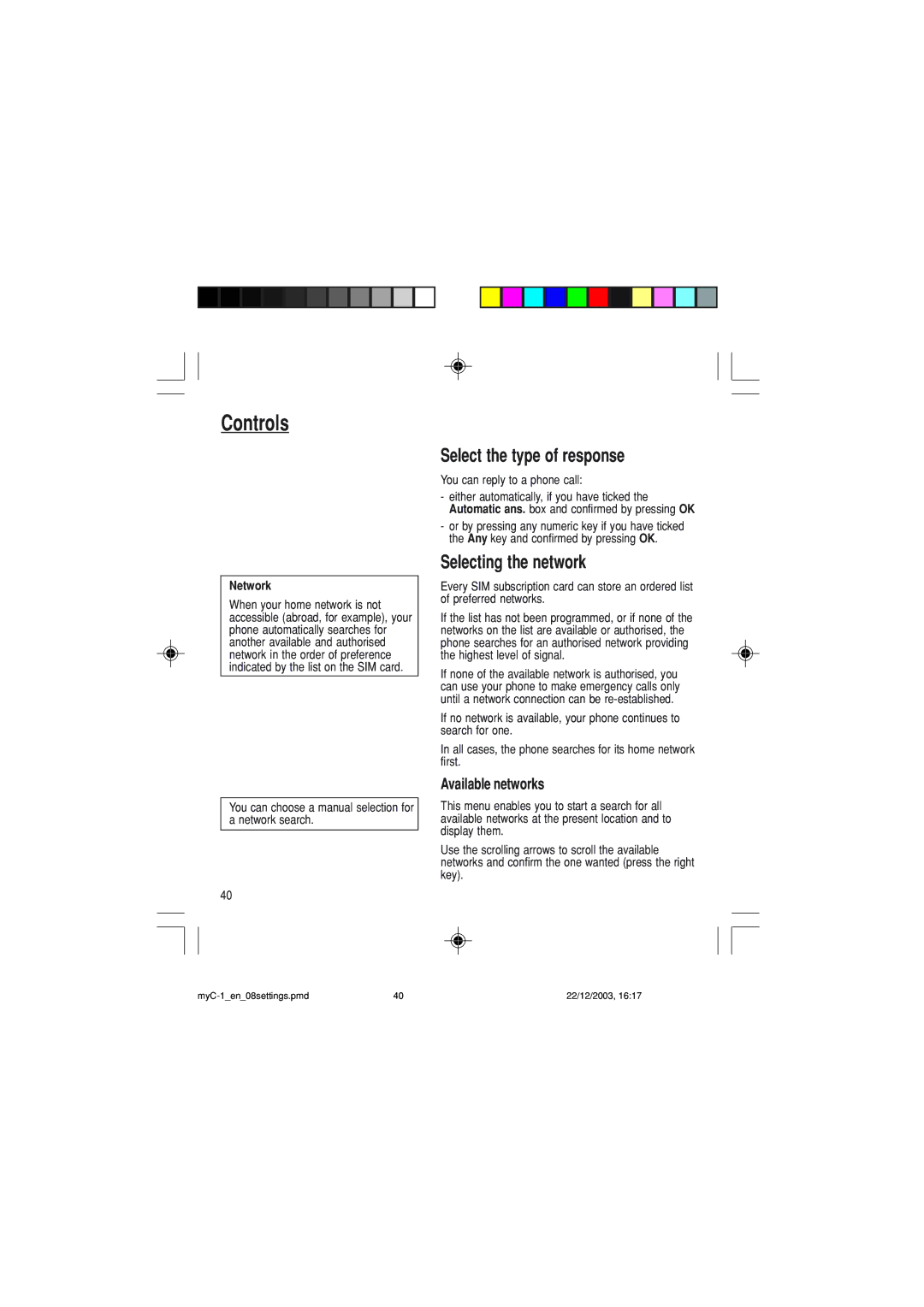myC-1 specifications
The Sagem myC-1 is a notable mobile phone that emerged in the early 2000s, captivating users with its unique design and functional features. Known for its compact size and lightweight nature, the myC-1 was designed to be an accessible device for the everyday user, embodying the essentials of mobile communication in a sleek form factor.One of the standout characteristics of the Sagem myC-1 is its distinctive clamshell design, which not only contributed to its portability but also offered protection for the screen and keypad when closed. This design was particularly appealing at the time, as it provided a stylish yet practical solution to mobile communication.
The device boasts a vibrant display that was relatively advanced for its time, featuring a 128 x 128 pixel resolution, which allowed for a clear presentation of text and graphics. The user interface was straightforward, making navigation simple for users of all technical backgrounds. The phone also supported a variety of ringtones, accommodating the growing desire for personalization among mobile users.
Equipped with a standard rechargeable battery, the myC-1 offered decent battery life, allowing users to enjoy up to several days of operation on a single charge under normal usage. The inclusion of predictive text input facilitated faster messaging, aligning with the increasing demand for efficient communication methods.
In terms of connectivity, the Sagem myC-1 included features such as SMS and a basic phonebook, supporting up to 100 contacts. Such capabilities were essential for users looking to stay connected with family and friends. Additionally, the phone was designed with an integrated calendar and alarm functions, further enhancing its utility as a personal organizer.
The Sagem myC-1 also embraced the trend of mobile customization by allowing users to download wallpapers and games through WAP (Wireless Application Protocol). This feature expanded the device's functionality and catered to the growing interest in mobile entertainment during that era.
In summary, the Sagem myC-1 stands out as a quintessential device from its time, representing the shift towards more compact and feature-rich mobile phones. Its user-friendly design, functionality, and customization options made it a popular choice for consumers seeking a reliable communication tool. The myC-1's legacy continues to resonate, serving as a reminder of the evolution of mobile technology.

